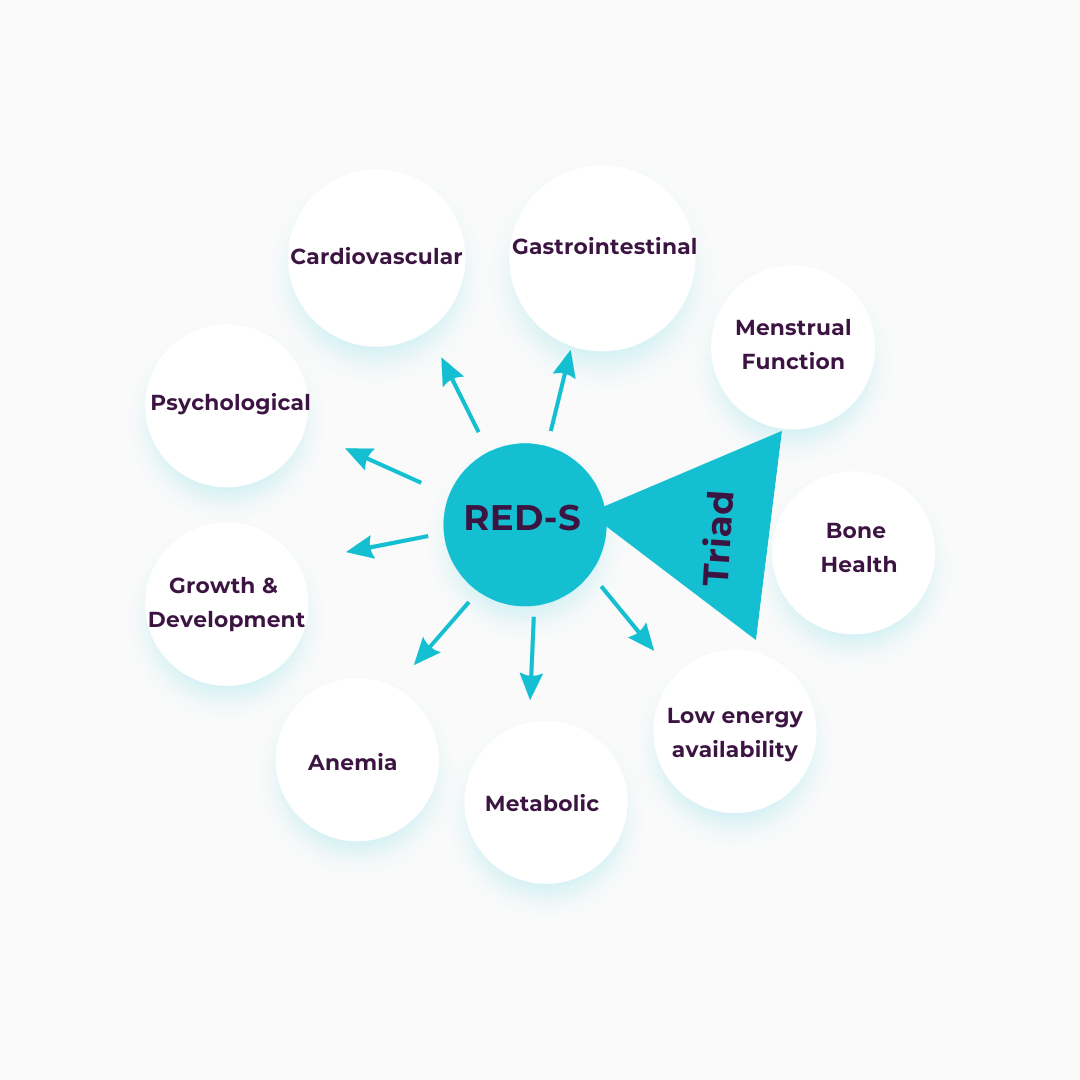Fueling Females: Understanding and Identifying Low Energy Availability in Athletes
Female athletes push their bodies to incredible limits to reach their goals in sport. However, the pursuit of excellence can sometimes come at a significant cost. By understanding LEA, female athletes can become empowered to prioritize proper nutrition and fuel their bodies as they achieve their full potential and optimal health!
What is LEA?
Low energy availability is defined as having an insufficient amount of energy to support normal physiological functions after you’ve expended energy through exercise. This translates to not eating enough to support both your training AND basic biological needs. While you may be able to still exercise and compete, your body doesn’t have enough calories left over to provide the energy needed to keep your organ systems functioning properly. This includes your immune system, reproductive system, hematological function, neurocognitive function, and cardiovascular function. Everyone requires energy to support these functions, but as athletes, these demands increase significantly through our training load.
The severity and consequences of LEA may differ between athletes depending the length of exposure and the intensity of the energy deficit. In adaptable LEA, there is a short-term reduction in energy intake that causes minor and temporary adjustments in physiological functions without having significant negative impacts on health or performance. Problematic LEA involves prolonged and/or severe energy deficits that lead to significant disruptions to the organ systems often leading to long-term consequences to health and performance. Understanding that LEA occurs as a continuum reinforces the importance of identifying LEA early to protect athlete’s long-term health and optimize athletic performance.
LEA and RED-S
LEA is considered to be the primary underlying cause of Relative Energy Deficiency in Sport (RED-S. When an athlete chronically under fuels, it leads to a state of energy deficiency which can manifest as various health and performance issues, known as RED-S. Without adequate energy to support the body, LEA can have serious health and performance consequences.
Identifying LEA in Athletes
Many athletes are unaware they aren’t consuming enough calories to support their training demands. This is why it is extremely important to know the signs and risk factors so that you can identify LEA early and prevent RED-s.
Risk Factors
Exercise dependence: High training volume and intensity without adequate recovery can create a significant energy deficit.
Chronic calorie restriction: Restrictive diets aimed at weight loss or achieving a specific body composition can lead to insufficient energy intake.
Disordered eating and eating disorders: Conditions like anorexia nervosa, bulimia nervosa, and orthorexia can severely impact energy intake and contribute to LEA.
Weight-conscious sports: Sports that emphasize low body weight or leanness can increase the pressure to restrict calories. Coach and parent expectations and team culture can play a significant role.
Genetic predisposition: Some individuals may have a higher genetic risk for developing LEA due to factors like metabolism and hormonal regulation.
Signs and Symptoms
Nutrition Intervention and the Role of the Dietitian in Treatment
As part of the healthcare team, our role as a Sports Dietitian is to guide athletes through a tailored recovery process. This includes a nutrition strategy focused on adequate energy intake to support weight maintenance or weight gain, restore normal lab values, and promote injury healing. The goal is not just to get you back to your sport, but to ensure education on the consequences of under-fueling and LEA.
Recovery from RED-S requires a multidisciplinary approach involving Physicians, Dietitians, and Mental Health Professionals. Together, we focus on restoring energy availability and preventing long-term consequences by increasing energy intake and managing energy expenditure. With proper nutrition and care, athletes can see a return to normal lab values, heal injuries, and recover menstruation—all key signs of true recovery.
The Bottom Line:
By this point, I hope it’s clear that understanding and identifying LEA in athletes is crucial for protecting their health and optimizing their performance. By recognizing the signs and symptoms of LEA, coaches, health professionals, and athletes can take proactive steps to address the issue, including adjusting training loads, Improving nutrition, and providing appropriate support and guidance. Early identification and intervention are key to preventing the long-term health and performance consequences of LEA in athletes.
Have you felt frustrated with your constant fatigue and decreased performance? Or maybe know an athlete experiencing these symptoms? Book an intro call today and let’s chat about how GracesGrit can help you overcome LEA and get back to competing at your best level!
Check out more information about LEA and RED-S on our instagram!
References:
Tarnowski, Caroline, et al. The Female Athlete: Sports Nutrition and Hydration Resources for Practitioners. 2024. Gatorade Sports Science Institute.



